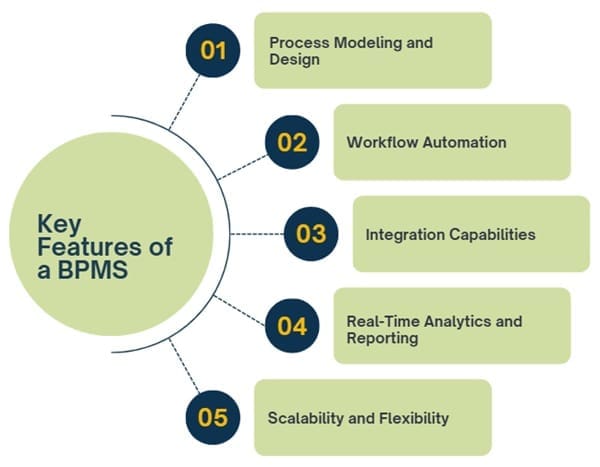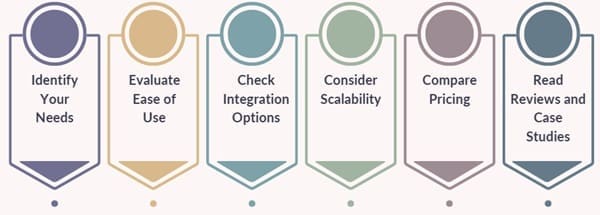A business process management system serves as the central nervous system for organizational workflows, enabling companies to visualize, execute, and continuously improve their operations. Unlike traditional software that addresses isolated problems, BPMS creates an integrated environment where all business processes work harmoniously together.
Modern enterprises recognize that survival depends on agility and efficiency. Consequently, businesses implementing robust BPM solutions report significant improvements in operational performance, customer satisfaction, and bottom-line results. This comprehensive guide explores everything you need to know about business process management systems and how they can revolutionize your organization.
Table of contents
What is a Business Process Management System?
A Business Process Management System is a software solution designed to help organizations define, automate, and optimize their business processes. Think of it as a digital conductor orchestrating every task, workflow, and decision within your company to ensure smooth, efficient operations. From managing customer inquiries to streamlining supply chain logistics, a BPM system brings order to the chaos of daily business activities.
At its core, BPM stands for Business Process Management, a discipline that focuses on improving corporate performance by managing and optimizing business processes. A BPM system takes this concept further by providing tools to model, automate, monitor, and analyze these processes. Unlike traditional software, BPM software is flexible, allowing businesses to adapt processes as needs evolve.
Public, Onsite, Virtual, and Online Six Sigma Certification Training!
- We are accredited by the IASSC.
- Live Public Training at 52 Sites.
- Live Virtual Training.
- Onsite Training (at your organization).
- Interactive Online (self-paced) training,
What is Process Management?
Process management definition extends beyond simple task automation. It involves the comprehensive oversight of interconnected activities that transform inputs into valuable outputs. Effective process management ensures that every step in a workflow contributes to desired business outcomes while minimizing waste and redundancy.
Process management encompasses several key elements:
- Process identification and mapping
- Performance measurement and monitoring
- Continuous improvement initiatives
- Resource allocation optimization
- Quality assurance and compliance
What is a Business Process?
A business process represents a collection of related activities that work together to accomplish a specific organizational goal. These processes span across departments, systems, and stakeholders to deliver value to customers or support internal operations.
Business processes typically include:
- Structured workflows with defined start and end points
- Clear roles and responsibilities for participants
- Specific inputs, outputs, and transformation activities
- Performance metrics and success criteria
- Governance rules and compliance requirements
Why BPM Matters ?
Every business, regardless of size or industry, relies on processes—whether it’s onboarding employees, processing orders, or managing finances. Without proper management, these processes can become inefficient, leading to wasted time, resources, and opportunities. A business process management system addresses these challenges by:
- Automating repetitive tasks: Free up your team to focus on high-value work.
- Improving transparency: Gain real-time insights into process performance.
- Enhancing collaboration: Ensure teams work together seamlessly.
- Reducing errors: Minimize manual mistakes with automated workflows.
For example, imagine a retail company struggling with delayed order processing. A BPM tool could automate order tracking, notify relevant teams, and ensure timely delivery—all while providing managers with performance analytics. This is the power of business process management software.
Also Read: Business Process Quality Management
Key Features of a Business Process Management System

When choosing a BPM platform, understanding its core features is essential. The best business process management software offers a robust set of tools to streamline operations. Here’s what to look for:
1. Process Modeling and Design
A business process management tool allows users to visually map out workflows using drag-and-drop interfaces. This feature, often called business process modeling software, helps businesses design processes without needing advanced technical skills. For instance, a marketing team can create a workflow for campaign approvals, ensuring every step is clear and efficient.
2. Workflow Automation
Automation is the heart of any BPM system. By automating repetitive tasks like data entry or email notifications, BPM software reduces manual work and speeds up processes. This is especially valuable for industries like manufacturing, where process management tools can automate production schedules or inventory tracking.
3. Integration Capabilities
A top-tier business process management solution integrates seamlessly with existing tools like CRM, ERP, or accounting software. This ensures that your BPM platform works harmoniously with your tech stack, creating a unified system for managing business processes.
4. Real-Time Analytics and Reporting
Data-driven decisions are critical in modern business. BPM tools provide dashboards and reports to monitor process performance, identify bottlenecks, and measure efficiency. For example, IBM BPM offers advanced analytics to help businesses track KPIs and optimize workflows.
5. Scalability and Flexibility
As your business grows, your BPM system should adapt. Scalable business process management software allows you to add new processes, users, or integrations without disrupting operations. This flexibility is crucial for businesses in dynamic industries like tech or healthcare.
Benefits of Implementing a BPM System
Adopting a business process management system isn’t just about technology—it’s about transforming how your organization operates. Here are the key benefits:
Increased Efficiency
By automating repetitive tasks and streamlining workflows, BPM software reduces the time and effort required to complete processes. For instance, a healthcare provider can use process management software to automate patient scheduling, cutting down on administrative overhead.
Cost Savings
Inefficient processes waste resources. A BPM tool eliminates redundancies, reduces errors, and optimizes resource allocation, leading to significant cost savings. According to a 2023 study, businesses using BPM solutions reported up to 30% reductions in operational costs.
Improved Customer Experience
A well-managed process directly impacts customers. For example, an e-commerce business using business process software can ensure faster order fulfillment, leading to happier customers and repeat business.
Enhanced Compliance
For industries like finance or healthcare, compliance with regulations is non-negotiable. BPM systems enforce standardized processes, ensuring adherence to legal and industry standards. They also provide audit trails for transparency.
Agility and Innovation
In a rapidly changing market, businesses must adapt quickly. Business process management tools allow organizations to modify processes on the fly, enabling them to respond to new opportunities or challenges with agility.
Also Read: Dr. W. Edwards Deming’s 14 Points for Management
How to Choose the Best Business Process Management Software

With so many BPM tools available, selecting the right one can feel overwhelming. Here’s a step-by-step guide to finding the best business process management software for your organization:
1. Identify Your Needs
Start by assessing your business processes. Are you looking to automate customer support? Streamline supply chain operations? Or improve internal collaboration? Understanding your goals will help you choose a BPM platform that aligns with your priorities.
2. Evaluate Ease of Use
The best BPM software is user-friendly, even for non-technical users. Look for platforms with intuitive interfaces, drag-and-drop process designers, and robust support resources. This ensures your team can adopt the system quickly.
3. Check Integration Options
Your BPM system should integrate with your existing tools. For example, if you use Salesforce for CRM, ensure your business process management software supports seamless integration to avoid data silos.
4. Consider Scalability
Choose a BPM solution that grows with your business. Whether you’re a small startup or a large enterprise, the software should handle increasing complexity without performance issues.
5. Compare Pricing
BPM software varies in cost, from affordable options for small businesses to enterprise-grade solutions like IBM BPM. Compare pricing models, including subscription fees, user licenses, and additional costs for integrations or support.
6. Read Reviews and Case Studies
Research user reviews and case studies to see how other businesses have benefited from the software. Platforms like Capterra or G2 offer insights into real-world performance of business process management tools.
Top Business Process Management Software in 2025
Here are some of the best business process management software options to consider:
1. IBM BPM
IBM BPM is a powerful BPM platform known for its advanced analytics and integration capabilities. It’s ideal for large enterprises needing robust process management tools for complex workflows.
2. Appian
Appian offers a low-code BPM system that simplifies process design and automation. Its user-friendly interface makes it a favorite for businesses of all sizes.
3. Pega Systems
Pega is a leader in business process management solutions, offering AI-powered automation and scalability for industries like finance and healthcare.
4. Kissflow
Kissflow is a cloud-based BPM tool designed for small to medium-sized businesses. It’s affordable, easy to use, and perfect for automating simple workflows.
5. Nintex
Nintex specializes in business process management workflow automation, with strong integration options and a focus on user experience.
Key Evaluation Criteria
Scalability and Performance The best business process management software must handle current process volumes while supporting future growth. Evaluate system performance under peak loads and consider scalability options for expanding user bases.
Integration Capabilities Modern organizations operate complex technology ecosystems. Choose BPM tools that offer comprehensive integration options including APIs, pre-built connectors, and data synchronization capabilities.
User Experience and Adoption Software adoption depends heavily on user experience. Look for intuitive interfaces, comprehensive training resources, and responsive customer support that facilitate smooth implementation.
Customization and Flexibility Business requirements evolve continuously. Select business process software that provides extensive customization options without requiring significant development resources.
How to Implement a BPM System Successfully
Implementing a business process management system requires careful planning. Follow these steps for a smooth rollout:
- Map Existing Processes: Document your current workflows to identify inefficiencies and areas for improvement.
- Engage Stakeholders: Involve key team members to ensure buy-in and alignment with business goals.
- Start Small: Begin with a single process, like employee onboarding, to test the system before scaling.
- Train Your Team: Provide training to ensure employees can use the BPM software effectively.
- Monitor and Optimize: Use analytics to track performance and make continuous improvements.
Challenges of BPM Systems and How to Overcome Them
While BPM systems offer immense benefits, they come with challenges:
- Resistance to Change: Employees may resist new systems. Address this with clear communication and training.
- Integration Issues: Ensure your BPM tool is compatible with existing software to avoid disruptions.
- High Initial Costs: Enterprise-grade BPM solutions can be expensive. Start with a scalable, affordable option and upgrade as needed.
Frequently Asked Questions (FAQs)
What is a Business Process Management System?
A Business Process Management System (BPMS) is software that helps organizations design, automate, monitor, and optimize their business processes to improve efficiency and productivity.
What is the difference between BPM and BPMS?
BPM (Business Process Management) is the discipline of managing and optimizing processes, while a BPMS is the software tool that enables automation and management of those processes.
How does BPM software benefit small businesses?
BPM software helps small businesses automate repetitive tasks, reduce errors, and improve customer satisfaction, all while keeping costs low and processes scalable.
What are the best BPM tools for 2025?
Top BPM tools for 2025 include IBM BPM, Appian, Pega Systems, Kissflow, and Nintex, each offering unique features for different business needs.
How much does BPM software cost?
Costs vary depending on the platform and business size. Small businesses can find affordable options starting at $10-$50 per user/month, while enterprise solutions like IBM BPM may cost thousands annually.
Final Words
A Business Process Management System is more than just software—it’s a strategic tool that empowers businesses to operate smarter, faster, and more efficiently. By automating workflows, providing real-time insights, and fostering agility, BPM solutions drive measurable results. Whether you’re a small startup or a global enterprise, investing in the right BPM tool can transform your operations and position you for long-term success.



















